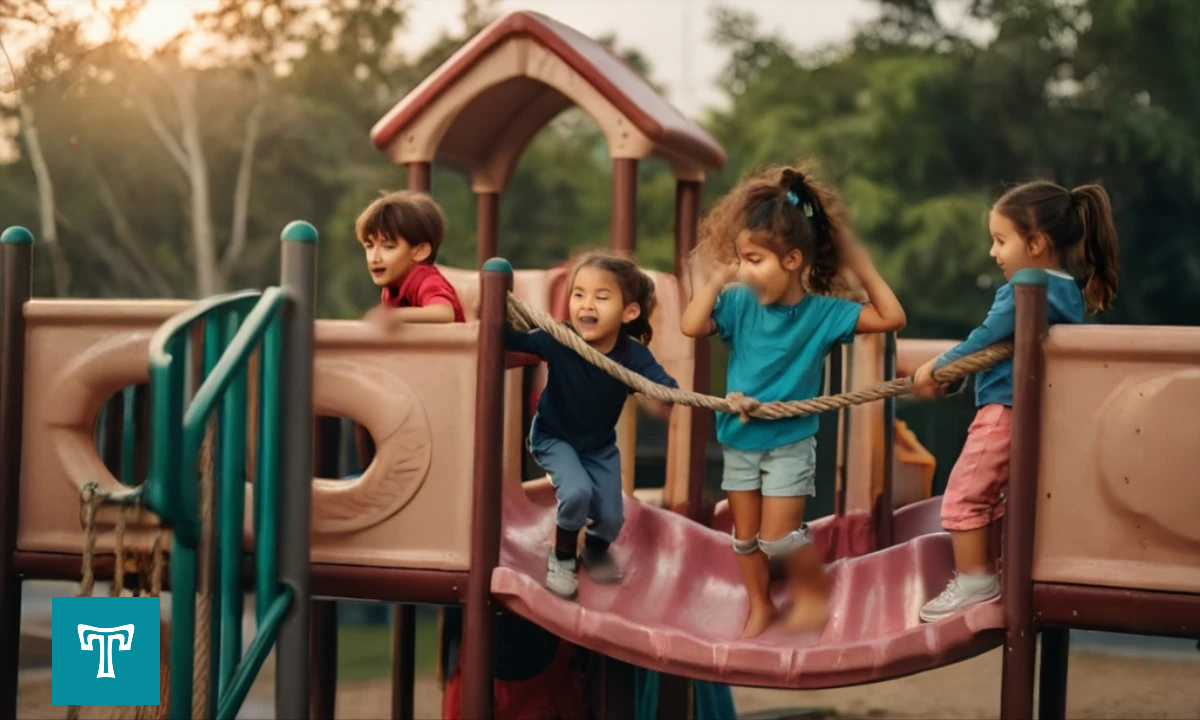Introduction to Creating a Safe Play Area
In today’s fast-paced world, outdoor play is more important than ever for the physical, emotional, and social development of children. As parents and caregivers, we strive to provide our children with safe and stimulating environments where they can explore, learn, and have fun. One of the best ways to encourage outdoor play is by creating a safe play area in our own backyard. This comprehensive guide will walk you through the steps to design and maintain a safe and enjoyable play area where your children can thrive.
Assessing Your Backyard Space
Before diving into the exciting task of designing a play area, it’s essential to assess your backyard space thoroughly. Take a walk around your yard, paying attention to its size, layout, and any existing features that may impact the design of your play area. Look out for potential hazards such as uneven terrain, sharp objects, or nearby bodies of water. By understanding the layout of your backyard, you can better plan and design a safe play area for your children.
Selecting Appropriate Play Equipment
Once you have assessed your backyard space, it’s time to select appropriate play equipment for your play area. Consider the age, size, and developmental stage of your children when choosing play structures such as swings, slides, and climbing frames. Look for play equipment that is sturdy, durable, and meets safety standards set by organizations such as ASTM International or the Consumer Product Safety Commission. Ensure that the equipment is age-appropriate and provides a variety of activities to keep children engaged and entertained.
Installing Impact-Absorbing Surfaces
Safety should always be a top priority when designing a play area, and installing impact-absorbing surfaces is essential for preventing injuries from falls. Consider options such as rubber mulch, pea gravel, or synthetic turf, which provide cushioning and protection in case of falls or accidents. Install these surfaces beneath play structures and in high-traffic areas to minimize the risk of injury and ensure a soft landing for your children.
Securing Boundaries and Fences
Proper fencing and boundary control are crucial for creating a safe and contained play area in your backyard. Install sturdy fencing around the perimeter of your yard to prevent children from wandering off or accessing potentially dangerous areas such as streets or neighboring properties. Ensure that gates are securely locked and that there are no gaps or openings that children can squeeze through. Regularly inspect fences and gates for damage and make any necessary repairs to maintain their integrity.
Providing Shade and Shelter
Protecting your children from the sun’s harmful rays is essential for their safety and well-being. Ensure that your play area includes adequate shade and shelter to provide relief from the sun’s heat and UV radiation. Consider options such as umbrellas, awnings, or shade sails to create shaded areas where children can play comfortably. Encourage children to wear sunscreen and protective clothing, such as hats and sunglasses, when playing outdoors, and provide plenty of water to keep them hydrated.
Ensuring Water Safety
If your backyard includes a pool, pond, or other water feature, it’s essential to implement stringent water safety measures. Install pool fences and safety covers to prevent unsupervised access to the water, and always supervise children when they are swimming or playing near water. Teach your children basic water safety skills, such as floating and treading water, and ensure that they understand the importance of never swimming alone. Additionally, consider enrolling your children in swimming lessons to further enhance their water safety skills.
Organizing Play Zones
Creating designated play areas within your backyard helps to establish boundaries and promote safe play. Designate specific areas for different types of play activities, such as a play structure zone, a sports and games zone, and a quiet reading or relaxation zone. By organizing play zones, you can prevent overcrowding and minimize the risk of accidents or collisions between children engaged in different activities.
Storing and Maintaining Outdoor Toys
Proper storage and maintenance of outdoor toys are essential for ensuring their longevity and safety. Invest in sturdy storage containers or bins to keep toys organized and protected from the elements when not in use. Regularly inspect outdoor toys for signs of wear and tear, such as loose parts or broken components, and repair or replace them as needed to prevent accidents or injuries. Additionally, clean outdoor toys regularly to remove dirt, debris, and germs, and ensure that they are stored in a dry and secure location when not in use.
Establishing Safety Rules
Setting clear and consistent safety rules is essential for promoting safe play in your backyard. Sit down with your children and discuss the rules and expectations for outdoor play, emphasizing the importance of following safety guidelines at all times. Encourage children to take turns, share toys, and respect each other’s boundaries when playing together. Establish consequences for breaking the rules, and be consistent in enforcing them to ensure a safe and enjoyable play environment for everyone.
Adult Supervision
While creating a safe play area is essential, adult supervision is equally critical for ensuring the safety of children outdoors. Always supervise children when they are playing in the backyard, especially younger children or those engaging in activities near potential hazards such as water features or play equipment. Maintain a watchful eye on children at all times and intervene promptly to prevent accidents or injuries. Additionally, consider enlisting the help of other adults or older siblings to assist with supervision, especially during large gatherings or playdates.
Emergency Preparedness
Despite our best efforts to create a safe play area, accidents can still occur. It’s essential to be prepared for emergencies and know how to respond effectively. Create an emergency plan for your backyard that includes procedures for handling injuries, contacting emergency services, and administering first aid. Keep emergency supplies such as a first aid kit, bottled water, and a flashlight readily accessible in case of emergencies. Additionally, educate your children about what to do in case of an emergency and practice emergency drills regularly to ensure that everyone knows what to do in a crisis.
Educating Family Members and Visitors
Ensuring the safety of your backyard play area extends to educating family members and visitors about safety guidelines and expectations. Inform family members and guests about any rules or restrictions regarding outdoor play, including areas that are off-limits or hazards to be aware of. Encourage open communication and collaboration in maintaining a safe and enjoyable environment for everyone. Additionally, provide clear instructions on how to use play equipment safely and what to do in case of an emergency.
Regular Maintenance
Regular maintenance is essential for keeping your backyard play area safe and inviting. Inspect play equipment, surfaces, and other features regularly for signs of wear and tear, damage, or deterioration, and make any necessary repairs promptly. Sweep or rake surfaces to keep them clear of leaves, dirt, or other debris, and remove any hazards such as fallen branches or rocks from the play area. Additionally, clean play equipment, surfaces, and toys regularly to remove dirt, germs, and other contaminants and ensure that they are safe for children to use.
Adapting as Children Grow
As your children grow and develop, it’s essential to adapt your backyard play area to meet their changing needs and interests. Modify play equipment and structures to accommodate the evolving abilities and preferences of your children, and make safety adjustments as needed. Regularly review and update your backyard play area to ensure that it remains a safe and enjoyable environment for your children to explore and play



